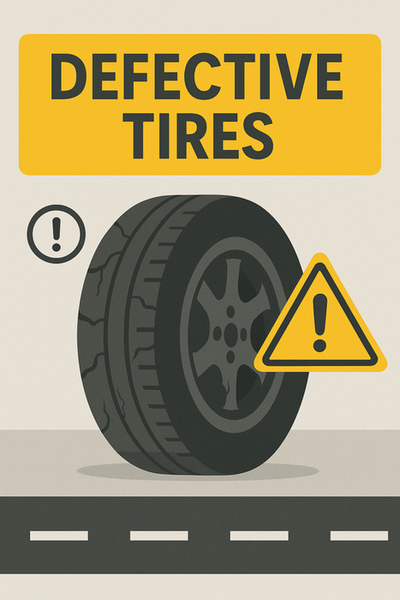Understanding the Impact of Tire Failures
Tire failures are a significant but often overlooked factor in serious vehicle accidents. When tires fail at highway speeds, drivers may experience sudden loss of control, resulting in potentially catastrophic outcomes including rollover accidents, veering into oncoming traffic, or driving off the roadway. As noted by safety experts, tires are critical components for both braking and steering, making their integrity essential for vehicle safety.
Common Types of Tire Defects
Several types of tire defects can lead to accidents:
- Manufacturing Defects: These may stem from poor quality control, substandard materials, or human error during production.
- Tread Separation: When the outer tread layer separates from the body of the tire, often resulting in sudden blowouts.
- Retread Failure: Problems with the adhesion of new tread to a used tire casing.
- Inadequate Separation Prevention Design: Design flaws that fail to prevent internal components from separating.
- Steel Belt and Tread Separation: When the steel reinforcement within the tire detaches from other components.
- Improper Puncture Repair: Poor-quality repairs that compromise tire integrity.
- Damage from the Mounting Process: Issues created during tire installation.
- Old Tires Sold as New: Tires that appear new but have degraded due to age.
The Physics of Tire Blowouts
The National Highway Traffic Safety Administration (NHTSA) reports that tire failures contribute to approximately 11,000 crashes annually in the United States. These failures typically manifest as blowouts, which create several hazards:
- Immediate Loss of Air Pressure: Reducing traction and stability
- Sudden Drag: Where the deflated tire creates resistance on one side of the vehicle
- Noise and Vibration: Distracting the driver during a critical moment
- Reduced Braking Capability: Particularly dangerous on wet or slippery roads
Expert Guidance for Handling Tire Blowouts
Safety experts recommend the following steps if you experience a tire blowout:
- Maintain a firm grip on the steering wheel with both hands
- Resist the urge to slam on the brakes
- Maintain your speed initially if possible
- Gradually release the accelerator
- Correct steering to stabilize the vehicle
- Once control is regained, slowly reduce speed and pull safely off the road
Liability in Defective Tire Cases
Multiple parties may be held liable in accidents involving defective tires:
- Tire Manufacturers: For defects in design or manufacturing processes
- Vehicle Manufacturers: If tires were original equipment on the vehicle
- Tire Retailers: For selling aged or improperly stored tires as new
- Installation Services: For improper installation or tire repair
Tire Recall Statistics
The NHTSA oversees tire recalls in the United States. Recent data shows:
- Between 2017-2023, over 8 million tires were recalled for safety-related defects
- The most common reasons for recalls included tread separation risks, sidewall failures, and manufacturing inconsistencies
- Only about 30% of recalled tires are actually brought in for replacement or repair
Evidence Preservation in Tire Defect Cases
If you suspect a defective tire caused your accident, preserving evidence is crucial:
- Retain the damaged tire(s) and all related components
- Document the accident scene with photographs
- Record tire information including brand, model, DOT code, and date of manufacture
- Note environmental conditions such as weather, time of day, and road conditions
Tire Maintenance Best Practices
Proper tire maintenance remains the first line of defense against accidents:
- Regular Pressure Checks: Monthly inspection following manufacturer specifications
- Tread Inspection: Using treadwear indicators or the “penny test” to check depth
- Professional Balancing and Alignment: Ensuring even wear and proper handling
- Scheduled Rotation: Following vehicle manufacturer recommendations
- Age Monitoring: Replacing tires typically every 6-10 years regardless of tread depth, as rubber compounds degrade over time
Checking for Recalls
The NHTSA provides resources for consumers to check whether their tires are subject to safety recalls. This information can be accessed through their website by entering the tire’s DOT code or by contacting tire manufacturers directly.
Conclusion
Tire defects represent a significant but preventable cause of vehicle accidents. Through proper maintenance, awareness of recall notices, and prompt action when problems are identified, drivers can substantially reduce their risk of tire-related accidents. When defects do cause accidents, understanding the potential liability of manufacturers, retailers, and service providers is essential for those seeking legal remedies.



